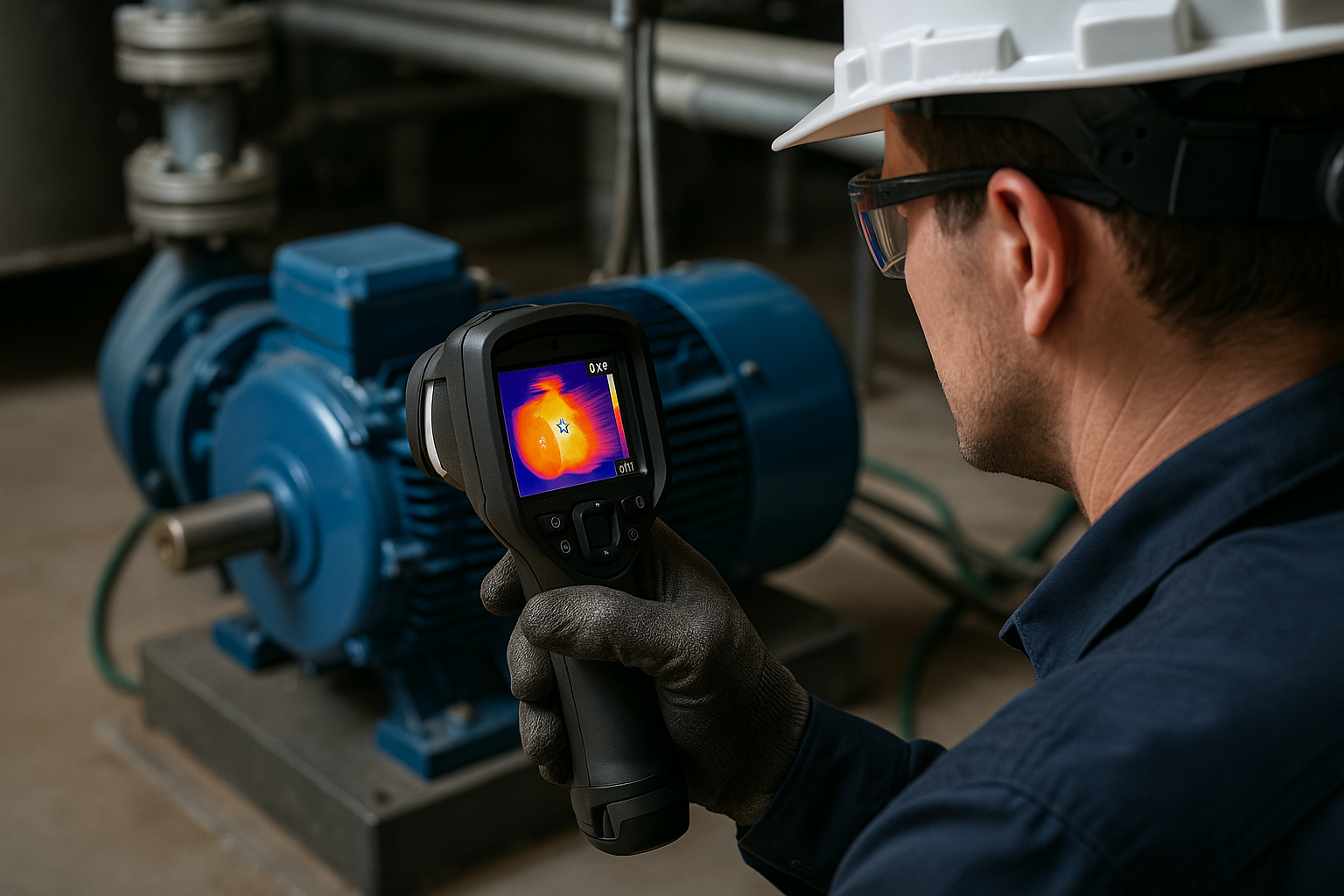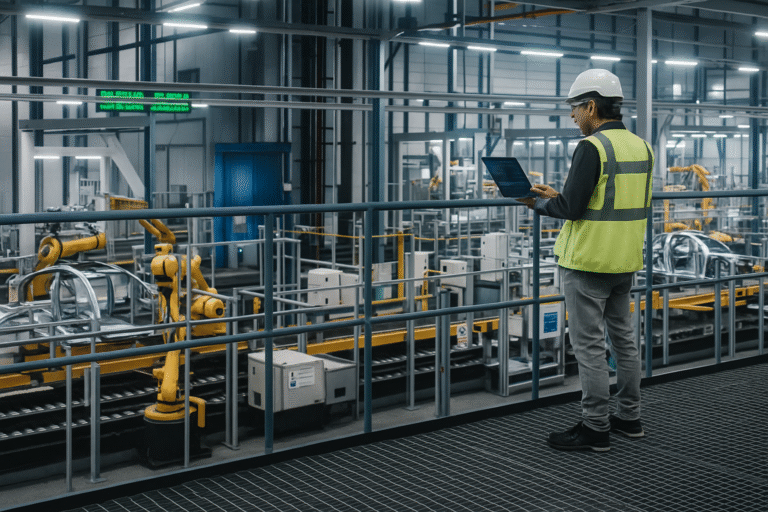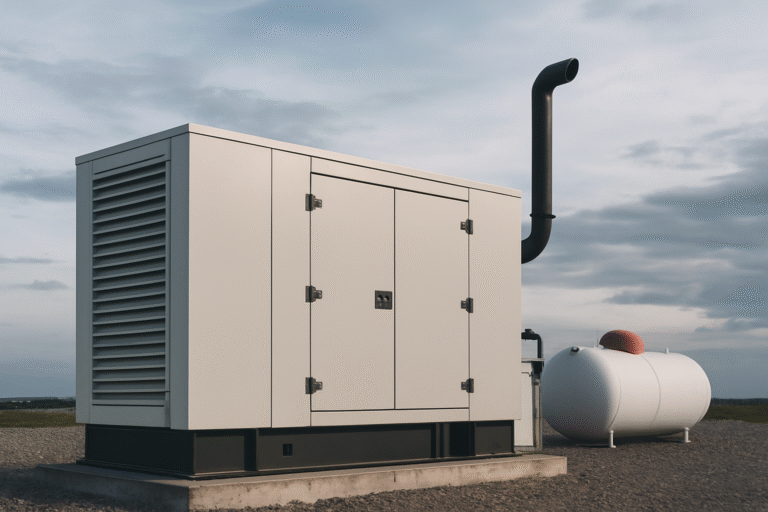
Industrial electrical systems are the backbone of modern facilities. They power conveyor belts, automation lines, lighting, and the control systems that keep everything moving. But here’s the reality: no matter how advanced your facility is, if you don’t stay on top of maintenance, you’re inviting downtime, safety hazards, and expensive repairs. That’s where preventive and predictive maintenance come in. At first glance, the two sound similar, but they are not. They both aim to keep equipment running longer and avoid breakdowns. But there are some key differences worth exploring, and understanding them can help you make smarter choices for your facility.
Preventive Maintenance vs Predictive Maintenance
Think of preventive maintenance like a regular doctor’s visit. Even if you feel fine, you go in for a checkup because you know catching problems early is better than waiting until you’re sick. In industrial facilities, preventive maintenance works the same way. It’s scheduled, routine, and focused on making sure electrical systems are cleaned, tested, and repaired before they fail. That might mean tightening connections, replacing worn parts, or scheduling inspections on wiring and panels. Preventive maintenance doesn’t wait for signs of trouble; it’s about stopping issues before they start. It’s predictable, budget-friendly, and keeps day-to-day surprises to a minimum. The downside is that it doesn’t always account for how equipment behaves in real-time.
Predictive maintenance takes things up a notch. Instead of relying on the calendar, it relies on data. Sensors, performance monitoring, and analytics can flag changes in temperature, vibration, or electrical load that point to a problem developing. Picture a motor that starts running hotter than usual. With predictive tools, you’ll know about it right away, long before it fails. Instead of replacing parts on a schedule, you replace them based on actual need. This approach reduces waste, extends the lifespan of equipment, and ultimately saves money. Of course, predictive maintenance requires more investment upfront, technology, training, and integration with your facility’s systems. But for operations where downtime is costly, it quickly pays for itself.
1. Overloaded Circuits: When the System Tries to Do Too Much
You’ve probably seen this one, too many machines plugged into a single circuit. At first, it doesn’t seem like a big deal. But behind the scenes, the system is straining, wires are heating up, and sooner or later, you’re looking at tripped breakers or worse, a fire hazard. The solution isn’t glamorous, but it works: spread out the load and upgrade circuits when the demand outpaces the design. Think of it like not putting the whole crew on one forklift; you’ve got to share the weight.
Preventive Solution: Schedule regular load assessments and inspections. By upgrading panels and spreading out loads on a routine basis, you keep circuits safe and balanced.
Predictive Solution: Utilize innovative monitoring tools that track electrical loads in real-time. These systems can alert you to spikes before they trip a breaker, helping you act immediately rather than waiting for a failure.
2. Outdated or Damaged Wiring: The Silent Trouble-Maker
Wiring is kind of like plumbing; you often don’t notice the problems until it bursts. Old wiring or poorly maintained cables can cause everything from flickering lights to dangerous shorts. And in an industrial setting, where machines are running nonstop, that risk doubles. Preventing this comes down to routine inspections. Walking the floor with an experienced electrical technician once or twice a year can help prevent massive downtime later. It’s not just about replacing wires.
Preventive Solution: Routine inspections catch wear and tear before it gets dangerous. Scheduling cable replacements or upgrades on a fixed cycle ensures your wiring never lingers past its safe lifespan.
Predictive Solution: Thermal imaging and smart sensors can detect hotspots and irregular current flow in wiring long before visible damage appears. That means you know exactly when and where a wire is failing, instead of replacing everything “just in case.”
3. Power Fluctuations: The Ups and Downs Nobody Wants
Another issue that often arises in facilities is inconsistent power. Voltage surges or dips might sound harmless, but sensitive equipment hates them. Conveyor controls, computer systems, and even lighting can get fried in the blink of an eye. That’s why surge protectors and backup systems like UPS units aren’t just nice-to-haves, they’re must-haves. It’s like giving your equipment a seatbelt. You hope you don’t need it, but when you do, you’ll be glad it’s there.
Preventive Solution: Install surge protection and UPS systems across critical machinery as part of a planned maintenance strategy.
Predictive Solution: Advanced power quality monitoring tools can identify patterns, such as recurring surges at specific times, enabling you to address root causes with your utility provider or redistribute loads before equipment is damaged.
4. Equipment Failures
This one hurts because it’s so preventable. When maintenance is pushed to the back burner because production is busy or budgets are tight, machines eventually break down. Motors overheat, panels fail, and conveyor systems shut down at the worst possible moment. Staying on top of preventive maintenance isn’t glamorous, but it’s the difference between a ten-minute tune-up and a ten-hour shutdown. A strong maintenance plan keeps your systems humming and your team out of crisis mode.
Preventive Solution: Follow a strict service schedule that includes regular inspections, lubrication, part replacements, and safety checks. Even when equipment seems fine, proactive care keeps it reliable.
Predictive Solution: Condition monitoring (vibration analysis, motor current testing, IoT sensors) gives you a live snapshot of your equipment’s health. Instead of replacing parts on schedule, you replace them when the data shows early signs of wear.
5. No Game Plan for Emergencies
Here’s the kicker: even if you do everything right, emergencies still happen. The problem is, most facilities don’t have a solid plan for when the lights go out or a circuit blows. Without one, you’re left scrambling. That’s why it’s critical to have both a response plan and a trusted electrical partner who can be reached at 2 a.m. Think of it like having a fire drill; it’s better to have the routine ready than to make it up as you go.
Preventive Solution: Emergency preparedness stems from establishing a baseline of routine checks, implementing backup systems, and having an on-call service provider in place.
Predictive Solution: Predictive analytics reduces emergencies altogether. By spotting problems weeks or months before failure, you avoid crisis mode and keep operations flowing smoothly.
Wrapping It Up
Electrical problems in industrial facilities aren’t just about wires and switches; they’re about keeping your people safe, your equipment reliable, and your operations running without costly interruptions. The good news is that most of these issues are preventable with the right inspections, upgrades, and a maintenance plan tailored to your facility’s specific needs.
At Conveyor Electrical Services, we design maintenance programs that combine preventive and predictive solutions, tailored to the unique needs of warehouses and industrial operations. If you’re ready to get ahead of electrical issues before they hit your bottom line, check out our Commercial Electrical Maintenance Services page and see how we can support your team.




